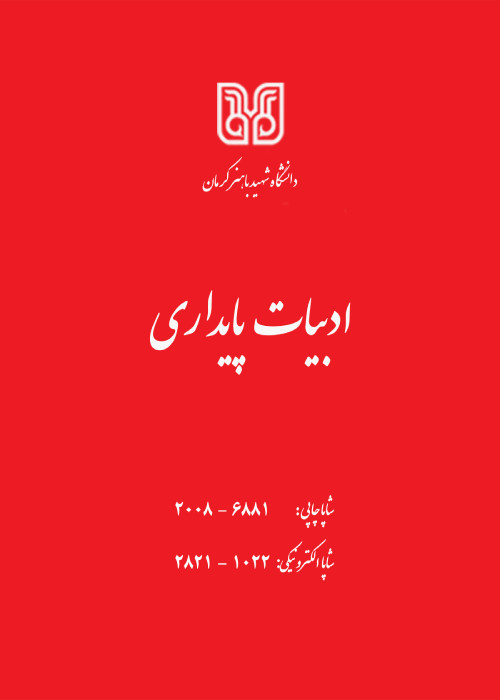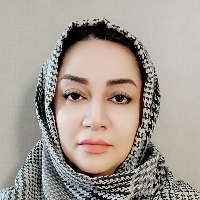The Manifestation of Struggle and Revolution in the Novel "Red White” by Mehdi Yazdani Khorram Based on the Views of Linda Hutcheon
It must be said that in the transformation of stories and history and even the war events that have occurred in recent years, semantic horizons in a wide and coherent network can be transformed and reproduced at all levels of language, body movements, and even sound and music. This means that any work can continue to exist at any time. Linda Hutcheon is one of the theorists who mentioned this term for the first time in the book "Theory of Adaptation". She believes that all stories, when reproduced in another culture and language in a time and place, can be institutionalized and localized in order to be adapted to all the conditions and ideology of the author. On the other hand, the phenomenon of revolution is one of the historical events that has a special place in the literature of sustainability. The phenomenon of revolution has a long history, and in the same way, the analysis of why and how it happened has existed since the past, especially since the second half of the 19th century. These events are like an opportunity given to the heroes to consider a path to continue their lives through the lens of political and social changes after the revolution. The Iranian revolution was formed by the rebellion of the weak class against the government. A revolution that included a populist ideology. The following questions will be answered in this study:Considering the role of irony in the dominant language of the characters in the story, what structure has the author used for the ironic style of the story? ,For what purpose does the author use "Kyokushin" techniques as a symbol of a historical moment?Sustainability literature as a literary genre, in the form of poems by poets such as Farrokhi Yazdi, Allameh Dehkhoda and Nasim Shomal, was formed during the constitutional period and spread widely in the following periods. The dominant method of narration in this literary genre is based on the concepts of resistance, sacrifice, hope, martyrdom and worship, tyranny and salvation. As a writer and theorist of the contemporary century, Linda Hutcheon has pointed out the basics of adaptation, irony in the text and also the methods of postmodernism in the novel in her works such as "Theory of Adaptation", "Irony Margin" and "Postmodern Policies". This research aims to examine a different face of war that Mehdi Yazdani Khorram has shown in the story "Red and White", with the approach of Linda Hutcheon's theories, in parallel with the real history of the Islamic Revolution and the struggles before and after it.Among the articles written about Hutcheon's opinions and also the theory of adaptation, the article "Historic metafiction; Case study: A lizard that swallowed the moon" Pirouz et al. There is another research called "From Arash Asatiri-Tarikhi to Arash Barkhani by Baizai" written by Taheri and Nobakht (2016), Nama Farhangistan, in which the authors examine the interpretation and re-creation of Beizai's "Arash Khani" text using the theory of historiographical metafiction. "Linda Hutcheon" have discussed and in the end they have come to the conclusion that the original narrative has been broken and a new narrative has been reproduced. But in terms of historiographical metafiction, we can refer to the article "Classification of metafictional elements with a focus on the short circuit and the author's communication triangle" written by Dezhban and Bagheri (2016), a literary research text that the authors in this research while examining metafiction and metafictional theories, have reviewed the characteristics of short circuit and have presented a new classification of metaphysics by providing evidence.
This research method in the research, on the one hand, has dealt with the topic of examining the components in different historical fields and on the other hand, with the experience and compilation of different historical stages about the 1357 revolution, and in order to design a conceptual problem in a scientific field, the method of content analysis is used. The basis of Hacheon's theories has been used.
Historiography metafiction is another form of history representation that is one of the first narrative values in the contemporary century. Therefore, the past is something that must be dealt with, and such a confrontation includes acknowledging its limitations as well as its power. We receive history through witness testimony and other archival materials. In other words, we only have representations of the past from which narratives or historical explanations can be constructed. In fact, postmodernism reveals the tendency to understand current culture as a product of previous representations. The representation of history becomes the history of representation. It means that postmodern art accepts the challenge of tradition and acknowledges that representation cannot be escaped, but it can be exploited and criticized through irony and irony as well as the author's imagination. In fact, most of these claims about metafiction can be the mission of an author's experience and knowledge. The author can be self-aware of the structures of realism as well as his personal imagination to portray a narrative objectively and with expressive language in order to make the authority of the storyteller tangible to the audience with a solid body and final ending. The characters in metafiction are transformed from real and historical to structural human beings and the result of the author's mind. In fact, metafiction portrays the concept of narrative and story in the way of confrontation between creation and dissolution of the author's imagination. Such a strategy in any narrative can confuse and confuse the reader, because it does not provide solid documentation, but everything is formed in an incoherent structure and the result of imagination and reality. The combination of historical characters with fictional characters and uncertainty in the "red and white" superstition. The metafiction of "Red and White" is a narrative that, by placing random events, seeks to create a temporary thing and a sense of chaos. The author of this story is distinguished from other writers because of the exact relationship between the verbal world of the narrative and the world of everyday life that has been created during the story. Undoubtedly, one of the elements of a historiographical superstition is the presence of historical figures alongside fictional characters created in the author's mind. The false storytelling of a historical writer takes the form of a documentary by bringing real spaces and characters, and this is what inspires the reader with the true identity of the heroes. "The status of fictional characters, like linguistic signs, is the status of absence. To be or not to be. There are no fictional characters, but we know who they are. We can point to them and discuss them" (Ibid: 132). The novel "Red and White" is full of fictional characters that are present in every sub-narrative, which at first glance seem unimportant, but with a little reflection, one can understand that the author can understand the influence of a huge segment of the society from the life of each character. It has exhibited a phenomenon. From the reader's point of view, these characters may seem abnormal and unrealistic; however, the author shows this abnormality to the audience in a completely normal way with his intelligence and harmony of their lives with historical events. The historical figures that Yazdani Khorram has used in the best way in the novel "Red and White" are people who have been placed in the margins of history and only their names remain in history. People like "Abbas Hoveida" whose only death is a turning point in the history after the revolution. In this book, the author describes the body of "Hoveida" with his obsessive detail. ,
The novel "Red and White" forces the audience to discover and intuition in a completely deliberate and technical way. While reading the book, every reader looks for heroes who are somehow related to the main hero of the story. Each section of the book that is dedicated to an opponent is full of sub-narratives that become attached to a character. The metasfiction of "Red White" is a balanced story between history and imagination. In the manner of an old storyteller, the author shows his desire to create imaginary realities and worlds created by his mind, with the help of detail in each part. Worlds that may attract any reader. In fact, the character of "33-year-old Kyokushin Kai" of Yazdani Khorram can be two dimensions of the author's character during the narration. The pristine and non-stereotyped images that he has created in every fight benefit from a completely realistic atmosphere. Sometimes people assume a mysterious state, such as the character of "Mohsen" in the 14th fight, who assumes himself as a rival to the hero of the story. But again, it is not possible to definitively predict the meaning of people's actions with a logical process. In the same way, the author's method for the journey of the audience's mind to history during the narration can be considered one of the elements of metafiction. The irony of the author's language in any situation originates from his critical view. He has used special words such as upright worker, spotted evil spirit, etc. for every situation that fits the characters. Therefore, it can be said that the purpose of the author in bringing such terms is to show the type of life of an individual in the society of that period. A society that has undergone huge changes after the Islamic revolution. The relationship between the people around the hero's character and the story space is a contractual relationship and subject to the rules of the author's mind. It is as if the author has targeted the realism and concreteness of the story by bringing this amount of narration and characters. In the end, it must be said that Yazdani Khorram is like an alchemist who, in his world of inspirations from dark and blood-soaked history, has drawn out a pure and popular writing that can attract any reader to his heroes.
- حق عضویت دریافتی صرف حمایت از نشریات عضو و نگهداری، تکمیل و توسعه مگیران میشود.
- پرداخت حق اشتراک و دانلود مقالات اجازه بازنشر آن در سایر رسانههای چاپی و دیجیتال را به کاربر نمیدهد.





